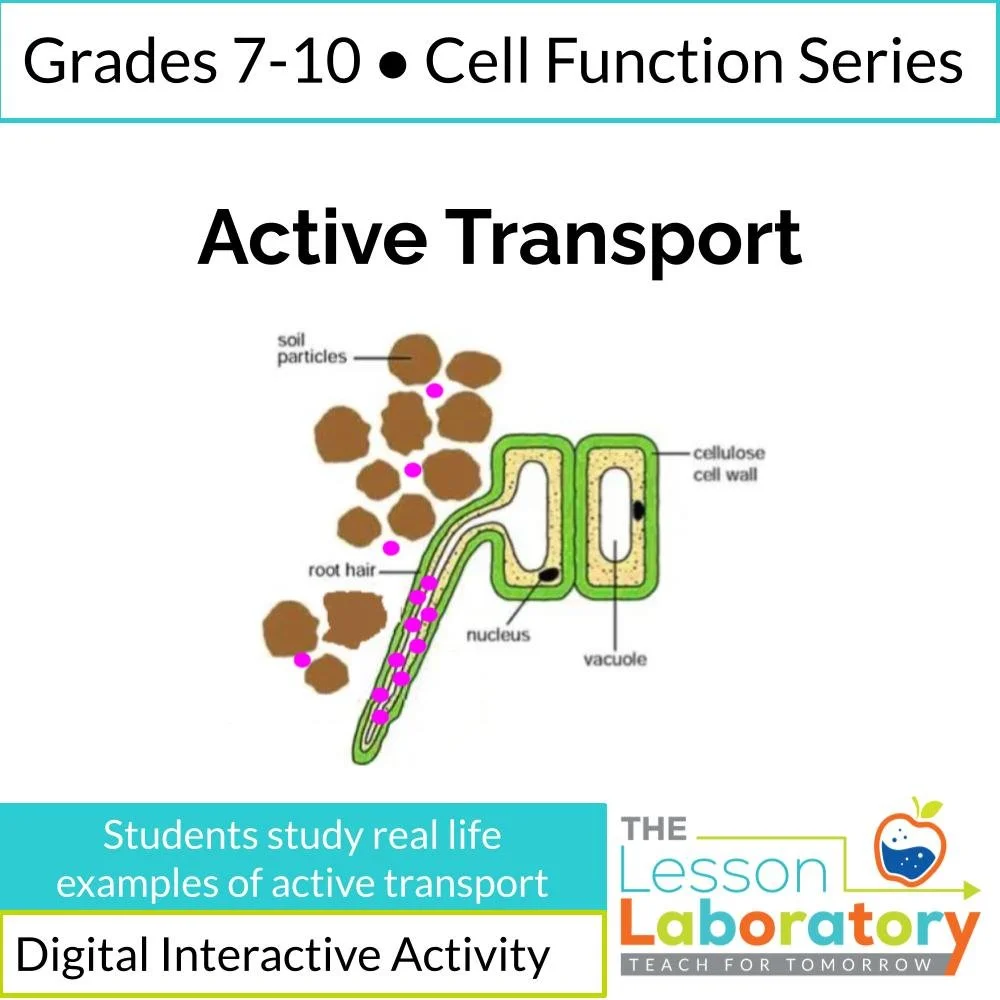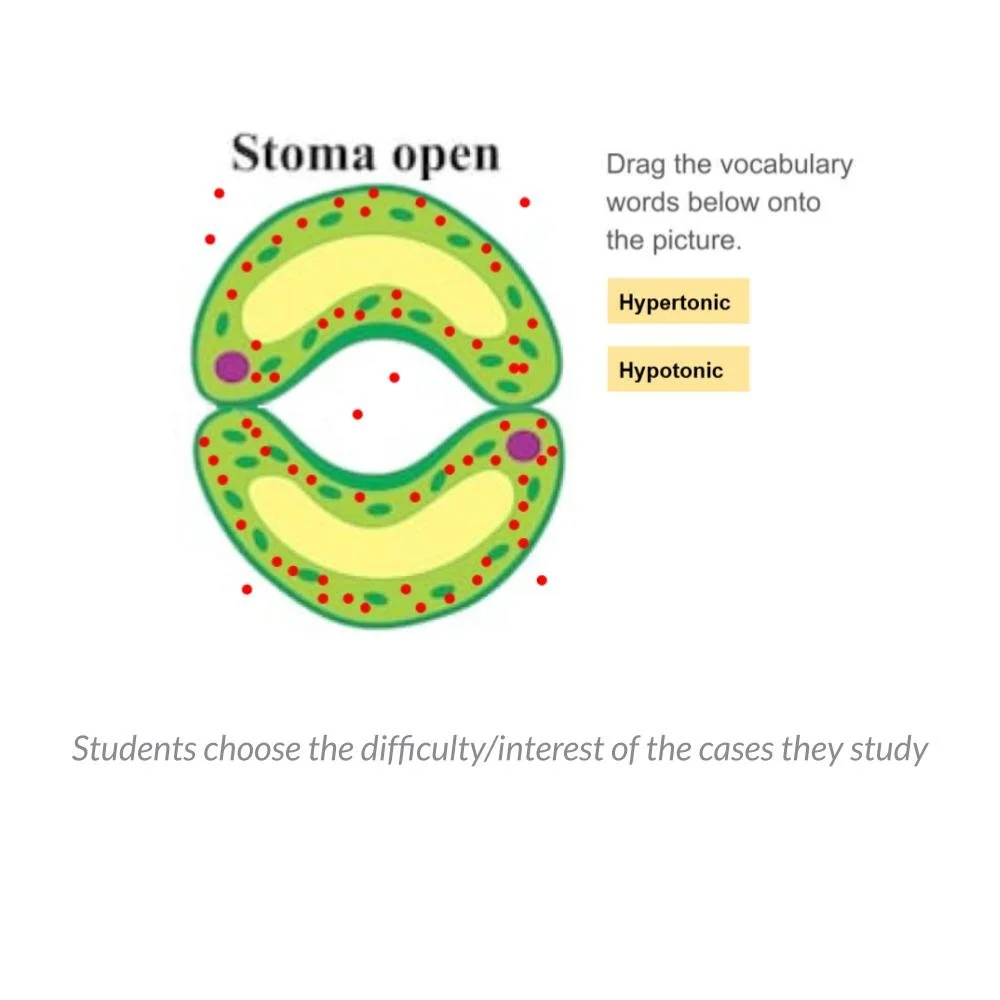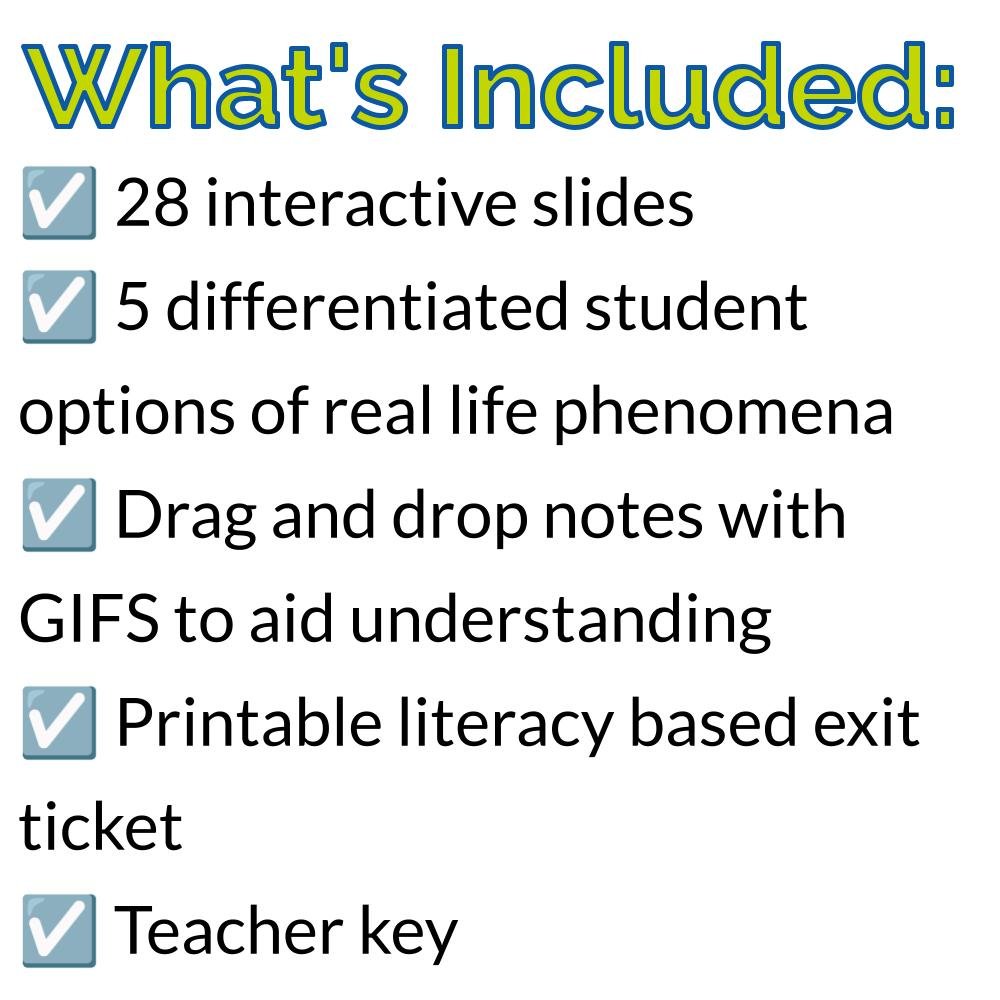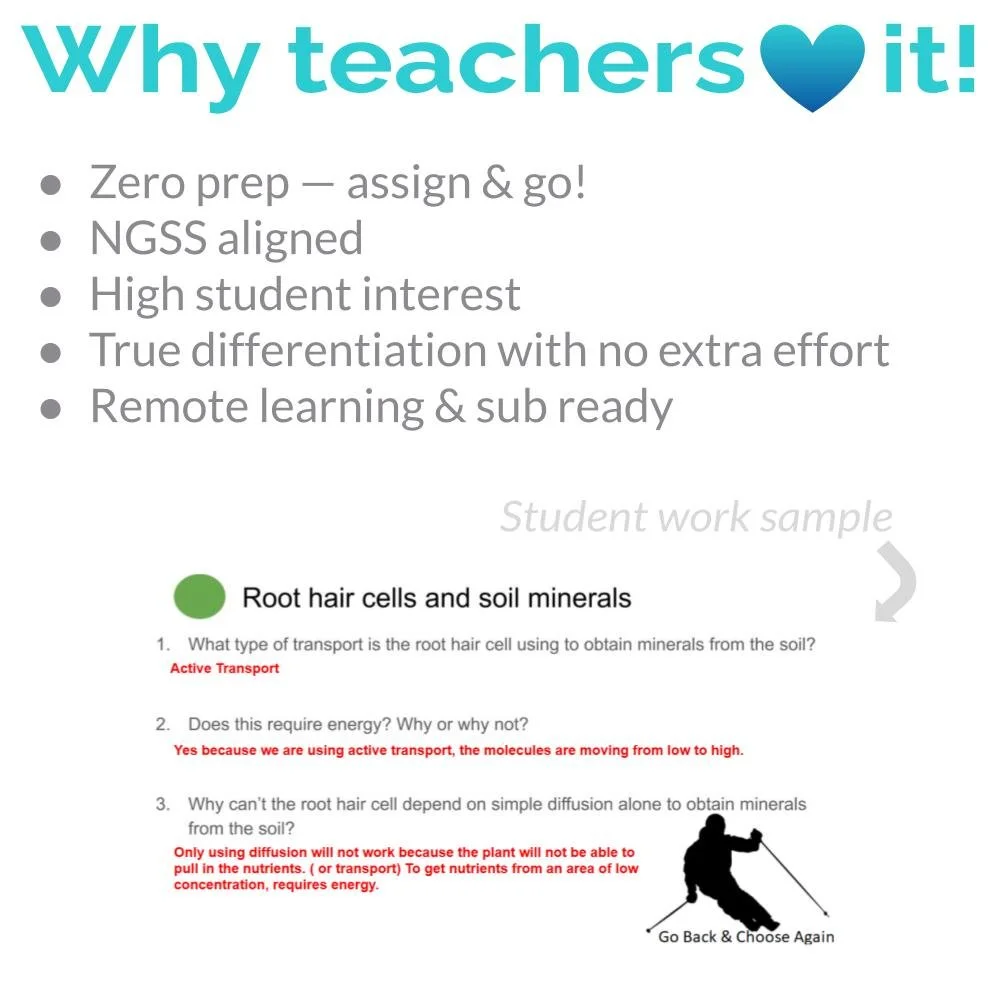



Active Transport – Cell Membrane Pumps, ATP Energy & Real-Life Biology Examples Digital Lesson
A Digital Slides Lesson with Diffusion vs Osmosis Review, Protein Pumps, and Student Choice Case Studies.
Unlock the Secrets of Cellular Transport
📚 Tailored for Success: This comprehensive lesson on cell membrane dynamics is meticulously crafted to engage and challenge students at every level.
🧠 Activate Prior Learning: Assumed knowledge of cell membrane functions and passive transport sets the stage for this immersive learning experience. Students step into the world of cellular processes with confidence, ready to tackle the next level.
📖 Visual Learning Reinvented: Our user-friendly lesson format combines easily digestible notes with captivating visuals. With two images and three animated GIFs, students not only read about concepts, but witness them in action, solidifying their understanding.
🏞️ Mastering Gradients: We take a unique approach, likening concentration gradients to hills, illuminating the energy dynamics at play. Students grasp the crucial difference between movement that requires energy and that which occurs naturally.
📊 Comparative Analysis: Strengthen critical thinking skills with a comprehensive table comparing diffusion, facilitated diffusion, osmosis, and active transport. This hands-on activity reinforces understanding through direct comparison.
🌟 Choose Your Challenge: Empower your students with a selection of five real-life examples of active transport, each categorized by difficulty. From root hair cells to plant stomata, students can choose their level of engagement, ensuring a personalized learning journey.
🔍 Unlock Analytical Skills: Dive deep into three of the five examples, honing analytical abilities and reinforcing the connection between theory and real-world applications. This exercise transforms passive understanding into active knowledge.
🌐 Embrace the Future of Education: Elevate your remote teaching with a lesson series that combines interactivity, differentiation, and real-world application. Invest in a learning tool that adapts to your students' needs and sets them on a path to true mastery.
Don't miss out on this opportunity to revolutionize your virtual classroom. Purchase now and watch your students thrive in their understanding of cell membrane dynamics.
To preview this product, click here
Grade Recommendation
Middle School: Grades 7–8 — fits NGSS LS1.A (Structure and Function) and LS1.C (Organization for Matter and Energy Flow in Organisms).
High School: Grade 9 (introductory biology or Living Environment). Works as reinforcement for HS-LS1-3 (cellular processes and energy transfer).
Cross-Curricular Connections / Extensions
Technology Integration: Uses interactive slides and embedded videos, encouraging students to interpret multimedia scientific information.
Math Connection: Conceptual understanding of gradients and concentration differences parallels slope and direction in mathematics.
Extension: Students could design an experiment (real or simulated) comparing passive and active transport, or model the ATP cycle using everyday analogies.
Daily slide + literacy - based exit ticket included with purchase
Join the Lesson Laboratory and Teach for Tomorrow!
NGSS Standards Alignment
MS-LS1-2:
Develop and use a model to describe the function of a cell as a whole and ways parts of cells contribute to the function.
Students connect structure and function by comparing protein pumps and concentration gradients.
MS-LS1-3:
Use argument supported by evidence for how the body is a system of interacting subsystems composed of groups of cells.
Applies indirectly through discussions of how cell transport supports organism survival.
HS-LS1-2:
Develop and use a model to illustrate the hierarchical organization of interacting systems that provide specific functions within multicellular organisms.
Active transport isn’t just a cellular phenomenon — it’s part of how organ systems maintain internal stability (e.g., kidney cells regulating ion concentrations, neurons restoring resting potential, or intestinal cells absorbing nutrients).
When students model or discuss active transport, they’re implicitly illustrating how cellular-level processes contribute to higher-order system functions, which is the central intent of HS-LS1-2.
HS-LS1-3:
Plan and conduct an investigation to provide evidence that feedback mechanisms maintain homeostasis.
Active transport’s role in maintaining concentration gradients and cellular balance ties directly to homeostasis.
Crosscutting Concepts (CCCs):
Structure and Function: Students relate protein structure to its role in transport.
Energy and Matter: The concept of ATP as cellular “effort” reinforces energy transfer in living systems.
Systems and System Models: Viewing the cell as an interacting system.
Science and Engineering Practices (SEPs):
Developing and Using Models: Students visualize molecule movement and gradients.
Constructing Explanations: They explain how energy use distinguishes active from passive transport.
Analyzing and Interpreting Data: They use provided visuals and examples (e.g., plant roots, mitochondria) to infer cellular processes.
Common Core Standards
CCSS.ELA-LITERACY.RST.6-8.7 / 9-10.7: Integrate quantitative or technical information expressed in words with a version expressed visually.
CCSS.ELA-LITERACY.WHST.6-8.2 / 9-10.2: Write informative texts to convey scientific concepts (students complete written explanations or exit tickets)
A Digital Slides Lesson with Diffusion vs Osmosis Review, Protein Pumps, and Student Choice Case Studies.
Unlock the Secrets of Cellular Transport
📚 Tailored for Success: This comprehensive lesson on cell membrane dynamics is meticulously crafted to engage and challenge students at every level.
🧠 Activate Prior Learning: Assumed knowledge of cell membrane functions and passive transport sets the stage for this immersive learning experience. Students step into the world of cellular processes with confidence, ready to tackle the next level.
📖 Visual Learning Reinvented: Our user-friendly lesson format combines easily digestible notes with captivating visuals. With two images and three animated GIFs, students not only read about concepts, but witness them in action, solidifying their understanding.
🏞️ Mastering Gradients: We take a unique approach, likening concentration gradients to hills, illuminating the energy dynamics at play. Students grasp the crucial difference between movement that requires energy and that which occurs naturally.
📊 Comparative Analysis: Strengthen critical thinking skills with a comprehensive table comparing diffusion, facilitated diffusion, osmosis, and active transport. This hands-on activity reinforces understanding through direct comparison.
🌟 Choose Your Challenge: Empower your students with a selection of five real-life examples of active transport, each categorized by difficulty. From root hair cells to plant stomata, students can choose their level of engagement, ensuring a personalized learning journey.
🔍 Unlock Analytical Skills: Dive deep into three of the five examples, honing analytical abilities and reinforcing the connection between theory and real-world applications. This exercise transforms passive understanding into active knowledge.
🌐 Embrace the Future of Education: Elevate your remote teaching with a lesson series that combines interactivity, differentiation, and real-world application. Invest in a learning tool that adapts to your students' needs and sets them on a path to true mastery.
Don't miss out on this opportunity to revolutionize your virtual classroom. Purchase now and watch your students thrive in their understanding of cell membrane dynamics.
To preview this product, click here
Grade Recommendation
Middle School: Grades 7–8 — fits NGSS LS1.A (Structure and Function) and LS1.C (Organization for Matter and Energy Flow in Organisms).
High School: Grade 9 (introductory biology or Living Environment). Works as reinforcement for HS-LS1-3 (cellular processes and energy transfer).
Cross-Curricular Connections / Extensions
Technology Integration: Uses interactive slides and embedded videos, encouraging students to interpret multimedia scientific information.
Math Connection: Conceptual understanding of gradients and concentration differences parallels slope and direction in mathematics.
Extension: Students could design an experiment (real or simulated) comparing passive and active transport, or model the ATP cycle using everyday analogies.
Daily slide + literacy - based exit ticket included with purchase
Join the Lesson Laboratory and Teach for Tomorrow!
NGSS Standards Alignment
MS-LS1-2:
Develop and use a model to describe the function of a cell as a whole and ways parts of cells contribute to the function.
Students connect structure and function by comparing protein pumps and concentration gradients.
MS-LS1-3:
Use argument supported by evidence for how the body is a system of interacting subsystems composed of groups of cells.
Applies indirectly through discussions of how cell transport supports organism survival.
HS-LS1-2:
Develop and use a model to illustrate the hierarchical organization of interacting systems that provide specific functions within multicellular organisms.
Active transport isn’t just a cellular phenomenon — it’s part of how organ systems maintain internal stability (e.g., kidney cells regulating ion concentrations, neurons restoring resting potential, or intestinal cells absorbing nutrients).
When students model or discuss active transport, they’re implicitly illustrating how cellular-level processes contribute to higher-order system functions, which is the central intent of HS-LS1-2.
HS-LS1-3:
Plan and conduct an investigation to provide evidence that feedback mechanisms maintain homeostasis.
Active transport’s role in maintaining concentration gradients and cellular balance ties directly to homeostasis.
Crosscutting Concepts (CCCs):
Structure and Function: Students relate protein structure to its role in transport.
Energy and Matter: The concept of ATP as cellular “effort” reinforces energy transfer in living systems.
Systems and System Models: Viewing the cell as an interacting system.
Science and Engineering Practices (SEPs):
Developing and Using Models: Students visualize molecule movement and gradients.
Constructing Explanations: They explain how energy use distinguishes active from passive transport.
Analyzing and Interpreting Data: They use provided visuals and examples (e.g., plant roots, mitochondria) to infer cellular processes.
Common Core Standards
CCSS.ELA-LITERACY.RST.6-8.7 / 9-10.7: Integrate quantitative or technical information expressed in words with a version expressed visually.
CCSS.ELA-LITERACY.WHST.6-8.2 / 9-10.2: Write informative texts to convey scientific concepts (students complete written explanations or exit tickets)